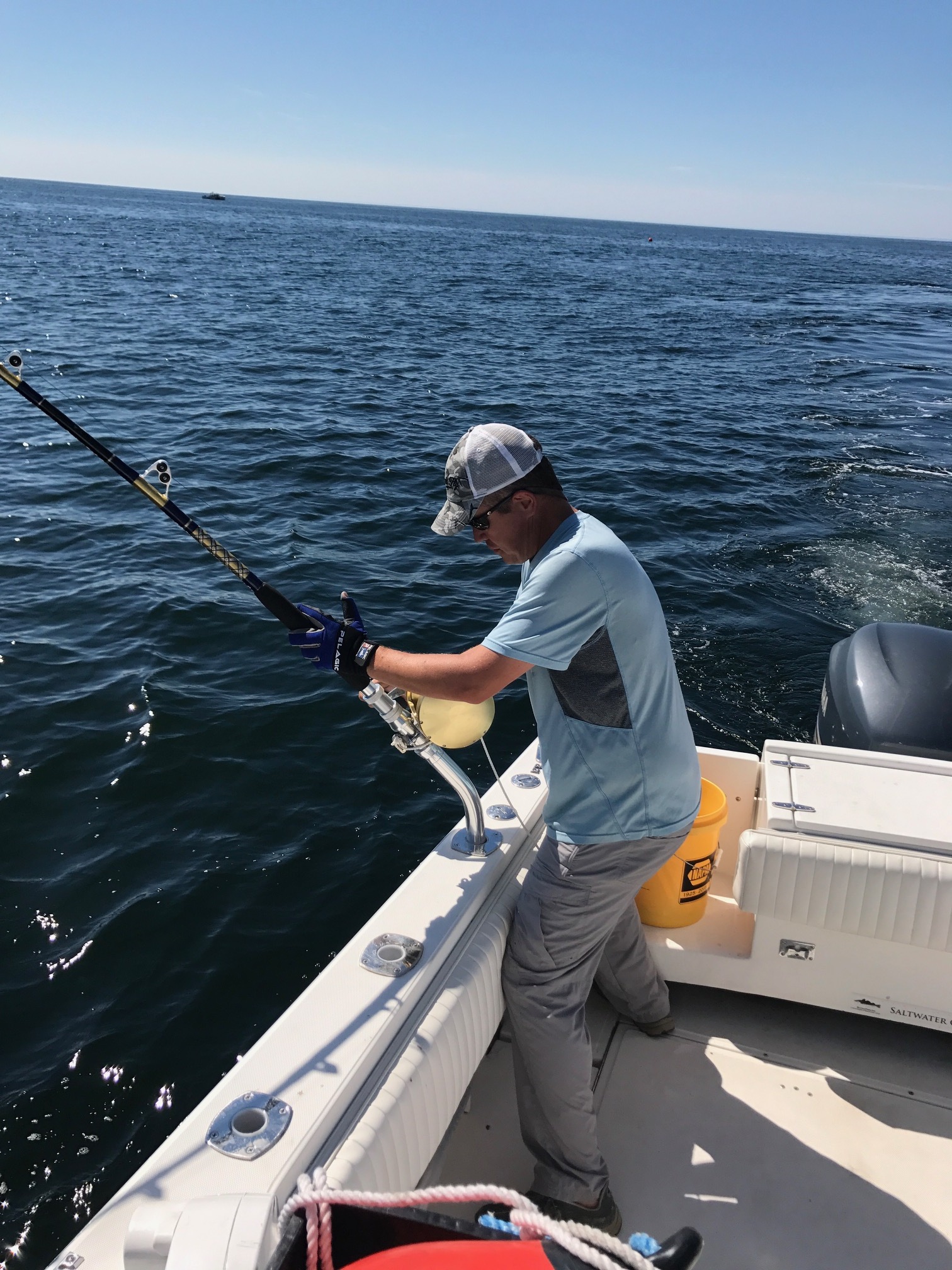TUNA!
/Tuna season has ended in the Gulf of Maine. Like other snowbirds, the big guys are headed south for the winter. But memories of a spectacular catch keep a smile on the face of Kennebunk native John Smart, plus a little windfall in his pocket.
Early last September, Smart and his buddy Barry Braddock cruised out from the Kennebunkport Marina aboard the “Blue Chip,” Smart’s Stamas 310 powered by two 250-HP Yamahas. When they were about 15 miles out, they “jigged” the lines with bait (mackerel and pollock), set their depths, and started alternating positions between the helm and rods, 8-foot bent butt Shimano 130s.
I asked John if he felt “lucky or good" when he fished for tuna. “Lucky,” for sure,” he said, and was indeed that afternoon. But he had to be good too because he and Braddock landed an 83-inch (303-pounds dressed weight) blue fin tuna, the highest grade there is.
Within hours they were back at Government Wharf on the Kennebunk River, discussing their catch with a broker who’d driven up from Gloucester, Massachusetts. An ice truck idled nearby. After the tuna was weighed, it was driven to the airport and on its way to Tokyo.
John Smart with his 102" blue fin tuna on September 11, 2017
“You don’t get a price for a week or two,” Smart said, “and you have to pay brokerage, freight and import fees, so you end up with about half — for us, for that fish, about $1,500.”
Smart used to angle for stripers. Then a work colleague took him tuna fishing. He got hooked, and received his commercial license in 2011. That means the 40-year-old can keep tunas 73-inches and up. The biggest blue fin Smart caught was 102-inches in 2014. The event echoed Santiago’s struggles trying to land a marlin in the Gulf Stream off the coast of Cuba.
“When I caught my biggest, I was solo at night on a center console Mako 23,” Smart recalled. “It took five hours to land the tuna, and then I had to haul him back into shore because he was too big for my boat!”
Smart fished for tuna five or six times this season. Ideally, he likes to go out with a buddy, leaving mid-afternoon and returning the following afternoon. “The older I get, the less I go out,” he said. “You come back exhausted after one night on the water.”
The hardest part of tuna fishing, Smart says, is “learning the trade. Books don’t teach you, nor does the tv show ‘Wicked Tuna,’ so you need a knowledgeable friend who helps you learn the ropes.”
“The key thing is to not take it too seriously,” Smart says. “People think it’s all about the money — it really isn’t, it’s just plain fun."
When John’s not out on the “Blue Chip” or playing golf at Webhannet Golf Club, he runs Smart Transportation, a provider of non-emergency medical transportation, with offices in Saco, Maine and Charleston, South Carolina.
Oh yes, he also makes and eats a lot of sushi, especially sashimi. Fresh? you bet. Right off the “Blue Chip.” Sea to table, as it were.
"Fishing for tuna is like trying to hook a Fiat going 90 miles per hour down a highway."
John Smart






